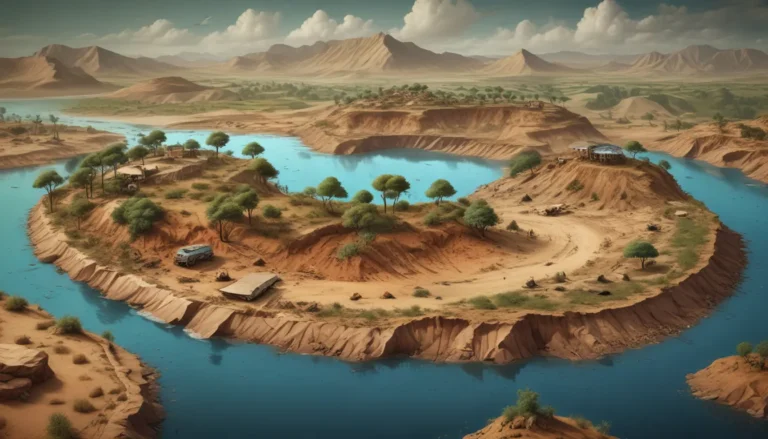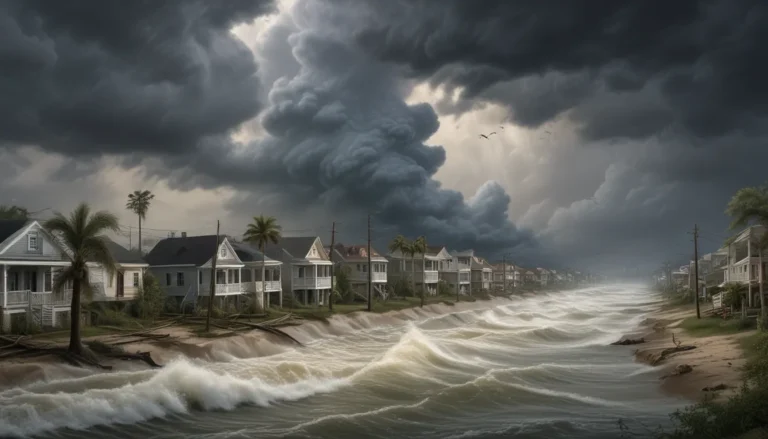A Note About Images: The images used in our articles are for illustration purposes only and may not exactly match the content. They are meant to engage readers, but the text should be relied upon for accurate information.
Water pollution is a pressing issue that affects bodies of water around the world, impacting plant and animal life, as well as human health. From its causes to its effects, there are essential facts to understand to address this critical environmental concern. In this guide, we will explore the various facets of water pollution, including its impacts, solutions, and some intriguing facts that shed light on the severity of this issue.
Water Pollution Is Contamination of Bodies of Water
Water pollution occurs when harmful compounds contaminate bodies of water, leading to adverse effects on the environment and living organisms. Sources of water pollution can include waste dumping from factories, farms, and cities, as well as runoff carrying toxic chemicals, trash, and dirt into waterways. Understanding the causes of water pollution is vital in addressing this problem and protecting our precious water resources.
Water Pollution Affects Plant and Animal Life
Contaminated water poses a significant threat to plant and animal life, as well as human populations reliant on clean water sources. The effects of water pollution can lead to illnesses, deaths, and disruptions in ecosystems. By safeguarding water quality, we can protect the biodiversity of our planet and ensure the well-being of all living organisms that depend on water for survival.
Causes of Water Pollution Lead to Contamination
Multiple factors can contribute to water pollution, ranging from sewage discharge into rivers to chemical runoff from agricultural activities. Sewers, chemical spills, and improper waste disposal all play a role in contaminating water sources, highlighting the importance of responsible environmental practices. By addressing the root causes of water pollution, we can prevent further degradation of our water systems.
Multiple Types of Water Pollution Overlap
Various forms of water pollution, such as nutrient pollution, surface water pollution, and groundwater pollution, often intersect and exacerbate the contamination of water sources. Nutrient-rich wastewater, chemicals, and pollutants can disrupt ecosystems, deplete oxygen levels, and harm aquatic life. Understanding these different types of pollution is crucial in implementing targeted solutions to mitigate their impact on water quality.
- Nutrient pollution can promote algae growth and deplete oxygen levels.
- Surface water pollution results from chemical spills on the earth’s surface.
- Groundwater pollution occurs when contaminants seep into underground water sources.
Don’t Litter: Protect Our Water Supply
Simple actions like proper waste disposal, reducing chemical use, and maintaining infrastructure can go a long way in safeguarding our water supply. Preventing litter, using eco-friendly products, and supporting water treatment initiatives can help mitigate the effects of water pollution and ensure access to clean drinking water for all. By adopting sustainable practices, we can protect our environment and promote a healthier ecosystem.
More Than 1,400 People Die From Water Pollution Daily
Tragically, water pollution claims thousands of lives each day, with contaminated drinking water leading to infections and diseases. The global impact of water pollution on public health underscores the urgency of addressing this issue and implementing solutions to provide clean and safe water sources for communities worldwide.
Clean Water Act Supports Water Treatment
Legislation such as the Clean Water Act in the United States plays a vital role in regulating water pollution and promoting water treatment practices. By setting guidelines for waste management and water quality standards, the Clean Water Act aims to protect the nation’s waterways and ensure access to clean drinking water for all residents. Supporting such regulations is essential in combating the ongoing challenges of water pollution.
Clean Drinking Water Is a Global Issue
Access to clean drinking water is a fundamental human right, yet many communities around the world face water quality challenges due to pollution and contamination. Countries like China, India, and Bangladesh are working to address water pollution issues and improve water treatment systems to provide safe drinking water for their populations. Collaborative efforts on a global scale are necessary to address the complexities of water pollution and protect public health.
The Ganges River Is One of the Most Polluted Waterways
The Ganges River, a vital water source for millions of people in India, faces severe pollution challenges due to industrial waste, sewage discharge, and contamination. Despite its cultural and religious significance, the Ganges River is one of the most polluted waterways globally, raising concerns about its safety for human use and ritual practices. Efforts to clean up the Ganges River are essential to protect both human health and the river ecosystem.
55% of American Rivers Are Polluted
In the United States, a significant number of rivers are classified as polluted, with only a small percentage meeting healthy water quality standards. The Environmental Protection Agency’s findings highlight the need for increased conservation and pollution prevention efforts to restore and maintain the health of American waterways. By addressing pollution sources and investing in water quality monitoring, we can work towards cleaner and healthier rivers for future generations.
Water Pollution Increases Risks of Infection
Polluted water presents various health risks, including infections and diseases that can affect individuals exposed to contaminated water sources. Preventative measures, such as avoiding contact with polluted water and practicing proper hygiene, are essential in reducing the spread of waterborne illnesses and protecting public health. Education and awareness about the dangers of water pollution can empower communities to take action and prioritize clean water practices.
Lake Karachay May Be the World’s Most Polluted Lake
Located in Russia, Lake Karachay is believed to be one of the most polluted lakes globally, primarily due to the dumping of nuclear waste in the 1950s. Efforts to mitigate radiation levels in the lake have faced significant challenges, underscoring the long-term environmental consequences of industrial pollution. Addressing the pollution of Lake Karachay requires comprehensive remediation strategies and international cooperation to safeguard water quality and ecosystem health.
The US’s Most Polluted Waterway Is the Mississippi River
Parts of the Mississippi River, known as the “dead zone,” exhibit high levels of water pollution, impacting aquatic life and ecosystem health. The pollution in the Mississippi River can have far-reaching consequences, affecting downstream areas and the Gulf of Mexico. Initiatives to reduce pollution in the Mississippi River and restore its water quality are critical in preserving this vital waterway and protecting the diverse wildlife that depends on it.
Exxon Valdez Was the US’s Largest Oil Spill
The Exxon Valdez oil spill in 1989 ranks as one of the most significant environmental disasters in the United States, releasing millions of gallons of oil into the ocean and coastal areas. The long-term effects of oil spills, such as ecosystem damage and wildlife mortality, highlight the lasting impact of industrial pollution on marine environments. Lessons learned from the Exxon Valdez spill underscore the importance of oil spill prevention and response strategies to mitigate environmental harm.
The Gulf War Was the Largest Oil Spill onto a Waterway
During the Gulf War in 1991, deliberate oil spills in the Persian Gulf resulted in massive environmental contamination, with millions of gallons of oil released into the water. The intentional nature of the oil spills exacerbated ecological damage and posed significant challenges for cleanup and restoration efforts. Awareness of the environmental consequences of oil spills is crucial in preventing future incidents and safeguarding marine ecosystems from pollution and degradation.
World Water Day Aims to Educate
World Water Day, observed on March 22 each year, serves as a platform to raise awareness about water conservation, pollution prevention, and sustainable water management practices. By highlighting the importance of clean water for human health, environmental sustainability, and economic development, World Water Day promotes global cooperation in addressing water-related challenges and fostering a culture of water stewardship. Education and advocacy initiatives on World Water Day aim to empower individuals and communities to take action towards ensuring clean and accessible water sources for all.
In conclusion, water pollution remains a critical environmental issue with far-reaching implications for ecosystems, public health, and sustainable development. By understanding the causes and effects of water pollution, implementing solutions such as water treatment and pollution prevention measures, and raising awareness about the importance of clean water, we can work together to safeguard our water resources for future generations. Let us commit to preserving and protecting our waterways, ensuring a healthy and sustainable environment for all.






